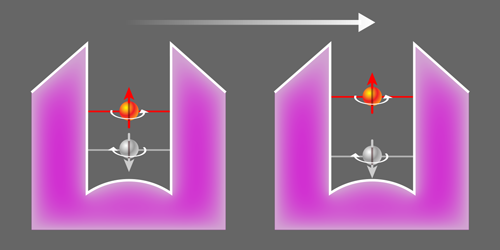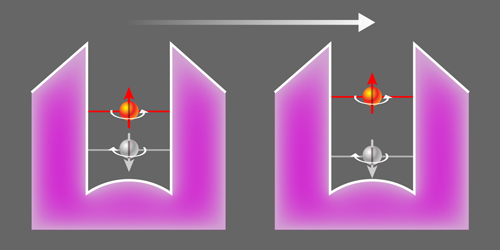Widening the Spin Energy Gap
Electronic devices are energy guzzlers. Researchers, like Elizabeth Marcellina of the University of New South Wales in Australia, hope to change that by creating lower-powered devices that use a particle’s spin, rather than its charge, to move information around in a circuit. Such spintronic devices potentially require much less energy than conventional electronic devices. Now Marcellina and her colleagues have demonstrated a new all-electric method to manipulate the spin of holes in a quantum-well device.
Researchers have been controlling spins with magnetic fields for decades. But magnetic fields require significant energy to turn on and off, and they are hard to localize, making them impractical for manipulating spins in nanoscale devices. Additionally, the energy difference between the two states of a spin—a value that sets the speed at which spins can be flipped—can’t be easily adjusted with magnetic fields. As a result, demonstrated magnetic-field-controlled devices are still too slow for applications.
The team’s device controls the spins of holes in a quantum well by changing an electric field, rather than a magnetic field. The electric field allows the team to manipulate the spin energy difference by changing the holes’ speeds. A larger electric field leads to faster moving holes, which, in turn, increases the energy difference between the spin states because of spin-orbit coupling in the quantum well. By adjusting the electric field, the team achieved up to a threefold increase in the energy difference between the holes’ spin up and spin down states. This increase should allow for faster flipping of spins, but the team says that further research is needed to determine the achievable speed gain.
This research is published in Physical Review Letters.
–Katherine Wright
Katherine Wright is a Senior Editor of Physics.





